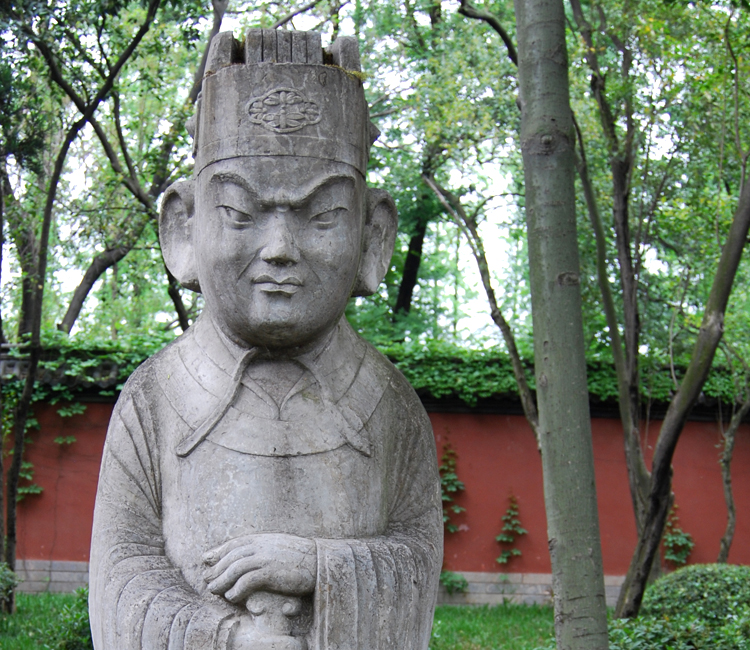When I arrived in China eight months ago, I asked just about anyone who spoke English what there is to do and see in Hefei. Most everyone mentioned the same place, Lord Bao Park or Baohe. In fact it’s the only real attraction listed in Lonely Planet for Hefei besides a Buddhist temple and an old replica house. I’ve been to the temple and passed the residence numerous times. Finally, after eight months I made the trip to pay my respects at Lord Bao’s tomb and memorial temple.
 First, who was Lord Bao?
First, who was Lord Bao?
Lord Bao the Just was a government official and magistrate from the Northern Song Dynasty nearly 1,000 years ago. He is held in high regard by the Chinese people for fighting corruption and being just. There have been numerous operas and other stories created about him for several centuries.
In my opinion though, he wasn’t the greatest of men. According to the stories I have read, he had absolute power to punish or execute anybody without receiving consent from the emperor or anyone else. He censored people for corruption and speaking against the government but didn’t get punished when he spoke out against the government. He basically took the law and people’s lives and deaths into his own hands.
He may have been a great man. I for sure haven’t read all there is to know about him. In fact, most of the information available about him is in heroic legend not volumes of history. It is possible that over the centuries he morphed into what the people or his favorite admirers the peasants wanted him to be and not what he really was. When I heard about him being hailed as a just person, I didn’t expect such a skewed sense of Justice.
Lord Bao was born in Hefei in 999 A.D. He served in the government all over, in both the capitol and provincial positions until he died. When he died his body was brought back to Hefei for burial.
The Tomb
The Park is broken into a couple of admission areas surrounded by green space and part of the city moat. The most important part of the park, because it wouldn’t be anything without it, is the family tomb area.

 Lord Bao and his family are buried there in multiple tomb mounds. There is a spirit walk with stone guardians that leads to the tomb similar to imperial tombs of the past although much smaller and less grand. Along the paths are several steles describing his accomplishments in Chinese.
Lord Bao and his family are buried there in multiple tomb mounds. There is a spirit walk with stone guardians that leads to the tomb similar to imperial tombs of the past although much smaller and less grand. Along the paths are several steles describing his accomplishments in Chinese.

One of the most interesting spots is the replica coffin chamber with this cool tunnel leading to it. It is underground right next to the actual grave but this one is a replica, according to the sign, with a room at the end with a replica coffin like his.
 The Tower
The Tower
The other main fee area of the park is a memorial temple, which is really just a pagoda with a couple of auxiliary buildings. Built in 1999 to celebrate his 1,000th birthday, it isn’t really ancient and is used to highlight Anhui just as much as Lord Bao.
Up the tower are several forms of art representative of the province and highlighting Lord Bao. At the top visitors can go out and walk around the balcony with great views, if a clear day, of the thriving city of Hefei.
One side building has a carved wood relief of Lord Bao Park while the second building was closed when I visited.
All around the fee areas are some very nice green spaces with the city moat to one side with graceful arched Chinese bridges and lovely walkways among the beautiful green trees. This peaceful scene is punctuated with plastic paddle boats like those found in water ways all over China.

There is a tea house on one island and some kind of museum on the other.
For being the “only” thing to see in Hefei, it is pretty small and more of just a memorial to someone the Chinese culture idolize. Most signs have English translations. It is a AAAA national tourist destination and a 50 RMB ticket gets you into both the tomb and tower.
Until next time, remember adventure is out there, so go have one!





